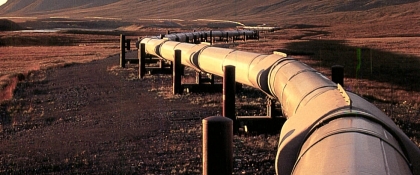Key Pipeline Closure Amplifies OPEC’s Efforts

OPEC’s continued efforts to draw the global oil glut down to its five-year average are receiving an unexpected shot in the arm by an oil pipeline outage.
But this time, it’s not the usual suspects of Libya, Nigeria, or Iraq. It’s a shutdown of a major oil pipeline in the North Sea, which is expected to last for weeks.
The Forties Pipeline System—responsible for carrying 40 percent of the UK’s North Sea crude oil production—was shut down earlier this week after a small hairline crack at Red Moss near Netherley, south of Aberdeen, was discovered. At the time of writing, the latest media update from Forties operator Ineos early Thursday stated that “At this stage it is still too early to say how long the repair will take to complete, but it is expected to be a matter of weeks rather than days. We can confirm that formal Force Majeure has been declared on relevant contracts.”
Not only is the Forties pipeline a key transit route for North Sea oil, the Forties crude blend is the largest component of the Brent-Forties-Oseberg-Ekofisk-Troll (BFOE) complex, which is the basis for the Brent futures contract.
So the Forties pipeline shutdown sent Brent prices soaring on Monday, further tightening an already tight oil market in north Europe, and sent near-month futures contracts at a very steep backwardation. All the results of the outage are seen as helping OPEC in its mission to reduce global inventories.
According to data compiled by Bloomberg, the Forties shutdown will remove an additional 5.5 million to 13 million barrels from the market by the time the pipeline is restarted.
The Forties pipeline’s capacity is 600,000 bpd, but throughput has averaged around 450,000 bpd so far this year, according to Platts estimates. The oil pipeline will likely be shut down for two to three weeks, Ineos director Tom Crotty told Bloomberg TV on Tuesday.
Related: Huge WTI-Brent Spread Boosts U.S. Crude Exports
At the same time, OPEC is upbeat about the massive drawdowns in recent months.
“We are continuously seeing massive de-stocking across all regions, both crude and products,” OPEC Secretary General Mohammad Barkindo told Bloomberg on Wednesday, noting that the global supply overhang is now around 130 million barrels over the five-year average.
“Commercial oil stocks in the OECD fell further in the month of November and the difference to the latest five-year average has been reduced by around 200 million barrels since the beginning of this year,” Barkindo said at an energy forum in China on Wednesday.
Now the Forties pipeline shutdown is tightening further the market in Europe, and traders have started scrambling for cargoes of medium sour blends instead, trading sources tell Platts. Several Forties cargoes are likely to be deferred, and if December loadings are moved into January, this will also affect February loadings as well, traders say.
Forties loadings for December were planned at 22 cargoes for a total of 13.2 million barrels, or 425,806 bpd, down by 14,194 bpd compared to November. Now the market is confused about which cargoes might be deferred or dropped from the December loadings schedule. Russia’s Urals and the UAE’s Murban are some of the alternatives to Forties in terms of similar quality. South Korea and the refining hub in Rotterdam are the main export destinations for the Forties crude, apart from the Ineos 200,000-bpd Grangemouth refinery that has started to look for crude oil from other sources.
The Forties outage is also creating a strong backwardation in the near months.
“The effect of Forties structure – it is super backwardated, so anyone who wants to place a cargo in the near term is penalized – super expensive, with this change in structure,” one crude trader told Platts.
The main impact on the Brent futures is the surge for contracts for deliveries in February and March, Reuters market analyst John Kemp notes.
The Forties pipeline outage also led to a surge in the spread between WTI and Brent, with Brent jumping to a premium to WTI of $7.25 a barrel on Tuesday, from $4.96 on December 4. Early on Thursday, the Brent premium over WTI was just below $6 a barrel.
Until the Forties Pipeline System is repaired—which will take weeks—oil flows into and out of the North Sea will change, oil fields will be shut in, and Russian and Middle Eastern crude oil supplies to Europe and to Asia could increase, as well as the number of U.S. crude oil cargoes to Asia. This outage may accelerate the pace of shrinking global inventories and give OPEC’s efforts an unexpected boost.
Related News
Related News

- Keystone Oil Pipeline Resumes Operations After Temporary Shutdown
- Freeport LNG Plant Runs Near Zero Consumption for Fifth Day
- Biden Administration Buys Oil for Emergency Reserve Above Target Price
- Mexico Seizes Air Liquide's Hydrogen Plant at Pemex Refinery
- Enbridge to Invest $500 Million in Pipeline Assets, Including Expansion of 850-Mile Gray Oak Pipeline
- Evacuation Technologies to Reduce Methane Releases During Pigging
- Editor’s Notebook: Nord Stream’s $20 Billion Question
- Enbridge Receives Approval to Begin Service on Louisiana Venice Gas Pipeline Project
- Mexico Seizes Air Liquide's Hydrogen Plant at Pemex Refinery
- Russian LNG Unfazed By U.S. Sanctions




Comments